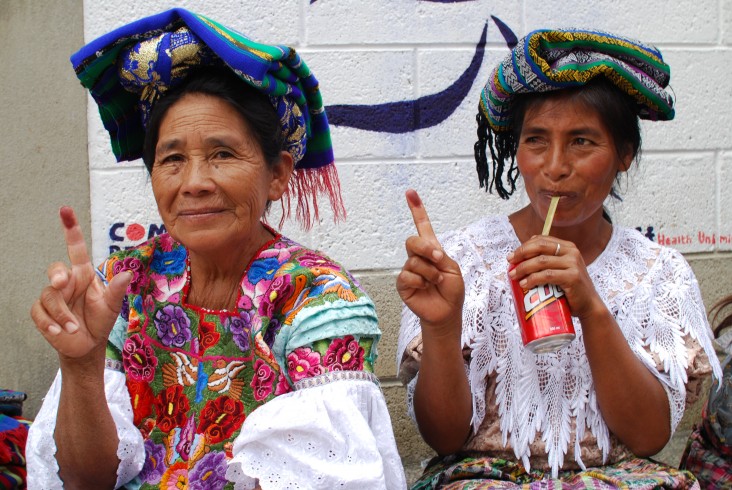
Traditionally, candidates who captured the majority of votes in Guatemala City win the presidency, but that is changing. The 2007 Guatemalan presidential election represents an important shift of power away from Guatemala City and toward the more rural areas of the country. Though this process was underway with the Guatemalan Republican Front (FRG) victory in 1999, it took on more importance with municipal decentralization in 2002 and now with electoral decentralization.
Much of the impressive shift in voter participation is attributed to the 3,477 new polling tables in the 681 new rural voting centers which were complemented by an updated voter registry. In the past voters were required to return to their birthplace to vote, which often took several days of travel on public buses. The decentralized voter registration allows people to vote in their current neighborhoods. In many polling places in Alta Verapaz, Huehuetenango, and Quiché, for instance, over 75% of registered voters cast ballots, many for the fi rst time.
The USAID-supported national observation network, Mirador Electoral, was proactive in its organization of new voters. Mirador worked with the Human Rights Ombudsman’s offi ce, with indigenous observation missions, and international observation organizations to train people in transparent election duties. Record numbers of people of all ages participated in the electoral process as polling officials and observers. Guatemalan and international election observers (including U.S. citizens and U.S. government employees) were impressed with the seamless function of the new rural voting centers.
Another first in the national elections was the concerted effort to include blind and deaf voters. USAID support was instrumental in providing public information on how and where to vote in sign language interpretation and Braille as well as ballots in Braille for every voting table, nationwide.
The decentralization of the electoral process provoked another historic turnover in Guatemala’s mayoral elections: fewer incumbents were re-elected. Of 332 elected mayors, 70 percent took offi ce for the first time compared to 30 percent last election. With more voters, mayoral candidates had to be more sensitive to citizens’ needs and interests, particularly those of women, youth, and indigenous people in rural areas who were voting for the first time. This is further evidence of an increasingly empowered citizenry in a country that only recently initiated the practice of democratic process in 1985.







Comment
Make a general inquiry or suggest an improvement.